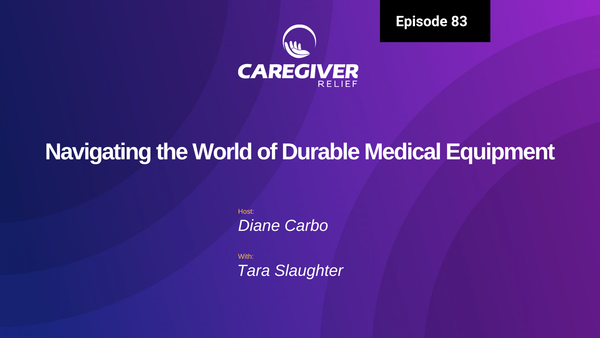What is an Assisted Living Facility?
An assisted living facility provides seniors with housing, personal care, and support for daily activities while promoting independence. Learn about the services, benefits, and how to choose the right facility for your loved one’s needs.

An assisted living facility, also known as a residential care facility, is a community that provides housing and personalized care for seniors. It offers assistance with activities of daily living, such as dressing, bathing, and preparing meals, as well as medical services, recreational activities, and socialization.
Assisted living facilities have been in existence for centuries, but the modern version of these residential communities began in the United States in the early 1970s. Since then, they have become increasingly popular as seniors seek safe, comfortable, and stimulating living environments.
Assisted living is designed to meet the needs of those who can no longer manage independent living, but do not require the round-the-clock nursing care found in a nursing home. People in need of help with daily activities, such as dressing, bathing, preparing meals, and taking medications, along with occasional medical care, may find an assisted living facility to be the perfect solution.
Separating Different Categories of Assisted Living Facilities
Assisted living facilities come in many shapes and sizes. There are nursing homes, senior apartments, and memory care facilities, among others. It’s important to be aware of the differences between these types of facilities so that you can make an informed decision about where to stay.
Nursing homes provide round-the-clock medical care by nurses and other qualified healthcare professionals. Residents who require medically supervised care due to disability or age may live in a nursing home. These facilities offer assistance with activities of daily living, as well as specialized medical treatment.
Senior apartments are designed for more independent seniors who don’t need ongoing medical attention. Some offer limited services such as weekly housekeeping, but most amenities are shared with other residents such as a swimming pool or common rooms. They are typically less expensive than nursing homes and are ideal for seniors who want to maintain an independent lifestyle.
Memory care facilities provide dedicated care for individuals with Alzheimer’s, dementia, and other cognitive disorders. Staff members are trained to understand the particular needs of memory impaired individuals. These facilities typically offer a secure environment, tailored activities, and 24-hour supervision.
Services Typically Offered by Assisted Living Facilities
Assisted living facilities provide a wide range of services to their residents. These facilities typically offer special dietary plans, medical care, social activities, and recreational opportunities.
One of the main focuses of an assisted living facility is providing nutritional meals to its residents. Most facilities have on-site chefs who prepare three full meals a day for all the residents. Dietary plans can be customized according to individual needs such as food allergies or medical conditions.
Assisted living facilities also provide residents with basic medical care including regular check-ups and medication management. Most facilities have an on-site nurse or other health professional who can assist with any medical needs. In addition, many facilities offer referral services for access to specialized care such as physical therapy or occupational therapy.
Social activities are also an important part of life in an assisted living facility. Residents can take part in a variety of activities and events such as art classes, yoga classes, movie nights, and much more. These activities provide a great way for residents to stay connected and engage in meaningful activities.
Recreational activities are another key element of life in an assisted living facility. These activities can include trips to nearby attractions, shopping trips, outings to local restaurants, and other activities. These outings give residents an opportunity to explore the area and take part in fun activities.
Assisted living facilities offer a variety of services to help residents lead active and fulfilled lives. From nutritious meals to medical care and recreational outings, these facilities provide a safe and enriching environment for their residents.
Regulations Governing Assisted Living Facilities
Assisted living facilities (ALF) are regulated by both state and federal laws. These regulations are designed to ensure the safety and well-being of residents in ALFs. Depending on where your facility is located, there may be additional rules and regulations.
At the state level, each state's Department of Health is responsible for inspecting and licensing ALFs. The regulations vary from state to state, but typically include requirements for building codes, fire safety, staffing levels, and medical care.
At the federal level, the Centers for Medicare & Medicaid Services (CMS) provides guidelines for ALFs that receive funding through Medicare and Medicaid. These regulations cover topics such as resident rights, medication management, infection control, and staff training. All ALFs must comply with these federal regulations to receive CMS funding.
The Department of Housing and Urban Development (HUD) also has regulations for ALFs that receive federal housing subsidies. These regulations cover topics such as rent levels, tenant selection criteria, and maintenance standards.
In addition to state and federal regulations, many local governments have their own rules for ALFs. These regulations can include zoning restrictions, fire safety requirements, and noise limits. Be sure to research local regulations before selecting an ALF.
It is important to understand the regulations governing an assisted living facility before selecting one. Make sure to ask questions about any state and federal regulations and any local rules that may apply.
Explaining the Cost Options of Assisted Living Facilities
When considering the cost of assisted living, there are several factors to consider. The monthly fees vary greatly between facilities, and some extra fees may also be applicable. Additionally, those with a limited income may be able to access Medicaid subsidies to help cover the cost of care.
Monthly Rates
The monthly rate for an assisted living facility depends on the type of care needed as well as the location of the facility. Generally, assisted living facilities are more expensive than government funded nursing homes, but less expensive than private residential nursing homes. The monthly rate typically includes meals, housekeeping, medication management, recreational activities, and personal care.
Extra Fees
In addition to the monthly rate, there may also be extra fees applicable. These can include fees for transportation, additional medical services, or extra fees for amenities such as cable television. It is important to ask about any additional fees charged by the facility prior to entering into any agreement.
Medicaid Subsidies
Low-income individuals may qualify for Medicaid subsidies to assist with the cost of assisted living. Subsidy rules vary from state to state, so it is important to research the regulations in your local area. In some cases, Medicaid will cover the entirety of the monthly fee while in other cases, the recipient may need to contribute some portion of their own income towards their care.
The Application Process for an Assisted Living Facility
Gaining admission to an assisted living facility (ALF) can involve many steps, so it’s important to understand what’s involved before getting started. Before proceeding with the application process, it's important to become familiar with the facility's discharge policies, required forms, and other matters of importance.
The most common application process starts with a visit to the facility, where you or a family member can meet with a representative to learn more about the facility. During this time, you can ask questions and get detailed information about the services offered and the costs associated. Once a decision has been made to apply for admission, the next step is to fill out and submit the necessary forms and paperwork to officially begin the admission process.
When submitting application documents for admission, these documents may include a completed medical form, proof of identity, and any necessary legal documents. Depending on the ALF you are applying to, additional documents may be requested such as a financial assessment or recent medical records. Once all the necessary documents have been submitted, the ALF will review your application and advise you of their decision.
Before admission is granted, it is important to understand the cost structure of the ALF. Make sure to ask questions about monthly rates, extra fees, and Medicaid subsidy availability for low income individuals. Once all questions have been answered and you are comfortable with the payment structure, you can move forward with the admission process.
Staffing at assisted living facilities is an important factor in determining the level of care they provide. The qualifications and training of staff members vary across facility types, and most have certain requirements by law. In general, all staff members must be adequately trained and certified to provide services to residents.
Qualifications for staff can vary by state and facility type, so it’s important to know the specific qualifications for each job position in the residence. Generally speaking, all staff members must possess a valid driver’s license, be drug-free, and pass a background check.
Some staff also require special certifications, such as nursing licenses, physical therapy licensing, or social work credentials. In addition, some states may require food service, dietary restrictions, and other safety certifications. Some residences may even require specialized training in certain types of care, such as dementia or Alzheimer’s.
The level of training for staff members also varies. All staff are typically required to attend regular trainings on topics such as infection control, falls prevention, and emergency preparedness. Some residences may also offer additional training classes, such as medical management, end of life care, or mental health topics.
It’s important to determine the qualifications and training of personnel when selecting an assisted living facility. Knowing the staff’s qualifications and the level of training can give you peace of mind that your loved one is receiving the best care possible.
A Typical Day at an Assisted Living Facility
Assisted living facilities provide a safe, comfortable living environment for seniors. A typical day in one of these assisted living facilities will involve safety protocols, activities, amenities, and a supportive atmosphere.
Safety Protocols
Most assisted living facilities employ strict safety protocols to ensure the security and well-being of the residents. Most facilities require that all staff and visitors check in and out of the building with proper identification. Visitors may be asked to check bags or purses upon entering. Additionally, there are often camera systems throughout the building and staff available 24 hours a day.
Activities
Activities and entertainment are important components of life in an assisted living facility. Residents may take part in group activities like art classes, baking, music, shopping trips, and visits to local attractions. For more private activities, common areas such as libraries, game rooms, and gardens provide plenty of options.
Amenities
Assisted living facilities typically offer a variety of amenities to its residents, such as fitness centers, swimming pools, computer labs, beauty salons, outdoor walking paths, and courtyards. Residents can also enjoy special dietary meals, housekeeping services, and laundry services.
Supportive Atmosphere
Supportive staff is an essential part of life in an assisted living facility. From scheduling appointments to providing companionship, staff members are always available to provide assistance when needed. Residents also have the opportunity to form meaningful relationships with their peers, creating a strong sense of community.
Understanding Residents’ Rights in Assisted Living Facilities
Assisted living facilities are required to provide a safe and comfortable environment for residents. To ensure this, the government has put in place several laws and regulations that govern how assisted living facilities must operate. It’s important for potential residents to familiarize themselves with their rights as outlined in legal and contractual documents. This will help them understand the governing principles of an assisted living facility before they commit to living in one.
At a minimum, assisted living facilities must respect and protect residents’ basic civil rights and afford them the same protections as any other member of the public. Importantly, they may not discriminate against anyone based on sex, race, age, religion, national origin or disability. They must also provide equal access to services regardless of a resident’s financial ability.
In addition, each facility has its own set of rules about admission, occupancy and maintenance that must be followed. These regulations must be clearly outlined in the contract that is signed when a resident moves in. Residents should read all contracts, policies, and other documents provided by the facility and ask questions if there is anything they don’t understand.
Assisted living facilities also have the right to terminate a resident’s stay if they are not following the rules or if their behavior is deemed dangerous or disruptive to other residents. Residents should follow all rules and regulations and should request clarification from staff if they have any questions. The facility must provide a written notification of the decision to terminate a resident’s stay.
Finally, all facilities must provide a grievance procedure for residents who feel their rights have been violated. Residents should contact the facility manager and/or report the issue to the state regulatory agency if they feel they have been treated unfairly.
Advice for Selecting an Assisted Living Facility
Making the decision to move into an assisted living facility can be difficult, but with helpful advice and guidance, it doesn’t have to be overwhelming. When selecting an assisted living facility, there are several important factors to consider. These include financial affordability, medical care, age restrictions, and emergency procedures.
When considering financial affordability, research exactly what services and amenities are included in the monthly fee and whether additional fees may be incurred. Also take into account how costs may be offset with Medicaid subsidies or other assistance. In some cases, family members may be eligible to contribute to the resident’s payment plan.
Regarding medical care, review the qualifications of the medical staff and the type of care they offer. Ensure that the facility can provide both short-term and long-term medical services. Additionally, consider if the care offered meets the needs of residents with varying degrees of physical and mental health issues.
Age restrictions may apply depending on the assisted living facility so inquire about any minimum or maximum age requirements. Facilities may also prefer admitting residents that are considered low-maintenance and able to manage daily activities with minimal assistance.
Finally, evaluate how an assisted living facility responds to various types of emergencies. Research their policy for contacting families in case of emergency and consider the accessibility of hospitals or medical centers nearby.
By following these guidelines, individuals can find a safe place to call home, where they can feel comfortable and secure. The right assisted living facility can give older adults the support they need and provide them with positive experiences.
Benefits of Assisted Living
Assisted living facilities offer many benefits to elderly citizens, allowing them to live in comfort and safety while receiving the care and support they need. Some of the advantages that can be experienced when residing in an assisted living facility include:
- Access to healthcare professionals: Most assisted living facilities have trained staff on-site around the clock, ensuring that medical needs are promptly met.
- Freedom from day-to-day responsibilities: Residents are relieved from the burden of completing household chores such as laundry, cooking, and cleaning, allowing them more time to focus on leisure activities.
- Social interaction: The communal atmosphere of assisted living facilities encourages socialization and friendship among its residents, reducing loneliness and promoting well-being.
- Safety & security: Assisted living facilities have comprehensive security measures in place to provide peace of mind and ensure the safety of their residents.
- Personalized care plans: Staff work with each resident to develop an individualized plan tailored to their specific needs and preferences.
There are countless stories of people whose quality of life has improved drastically due to a move to an assisted living facility. With customized care plans, access to healthcare professionals, and plenty of opportunities for socializing and leisure activities, seniors are thriving in assisted living communities all across the country.
Conclusion
Assisted living facilities are designed to help seniors who need assistance in their daily lives. They offer a wide range of services, tailored to meet the individual needs of each resident. Regulations, cost options, application processes, and staff qualifications must all be considered when selecting the best fit for an individual. Knowing the rights and benefits available to residents is also important. With the right facility, seniors can receive the support and care they need, while still maintaining a level of independence.
The guide has provided a comprehensive overview of what assisted living facilities are and how to select the best option for an individual’s needs. We’ve discussed different facility types, services provided, regulations, cost options, application processes, staff qualifications, life in the facility, and residents’ rights. By taking the time to read through the key points highlighted in this guide, seniors and family members can make an informed decision that will result in the best possible outcome.
You might also like this article:









